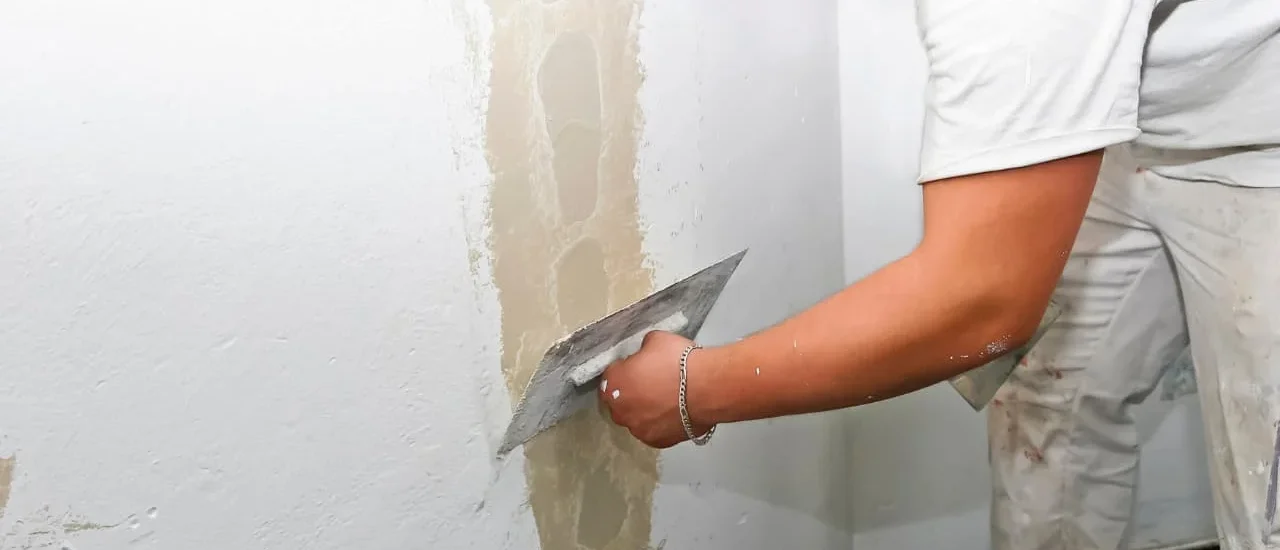Damp walls are a common issue in many homes, especially in older buildings or areas prone to high humidity or water infiltration. Before you apply a fresh coat of paint, it’s essential to properly treat damp walls to avoid peeling, staining, and mould growth. If left untreated, the dampness can damage your paint job and, worse, the walls themselves. This guide will walk you through the process of treating damp walls before painting, ensuring that your walls are prepared properly for painting and remain in good condition over time.
Why Treat Damp Walls Before Painting?
Painting over damp walls without addressing the underlying moisture problem will result in a poor finish. The paint will not adhere properly, leading to peeling, bubbling, or cracking as moisture continues to seep through the walls. Additionally, if the dampness is caused by mould or mildew, painting over it will only trap the spores under the paint, promoting further mould growth. Therefore, it’s crucial to treat damp walls before painting, both for aesthetic reasons and for maintaining a healthy home environment.
Identifying the Cause of Dampness
Before treating the walls, it’s important to identify the cause of the dampness. Common causes include:
-
Rising damp: This occurs when moisture from the ground rises through the walls due to poor waterproofing or damaged foundations.
-
Penetrating damp: Water entering through external walls due to faulty gutters, roof leaks, or broken pipes can cause damp patches on internal walls.
-
Condensation: High humidity inside the home, often caused by poor ventilation, can lead to condensation on walls.
-
Plumbing leaks: Water seeping from internal pipes or appliances can result in localised damp patches.
Once you identify the source, you can take the appropriate steps to fix the underlying problem. You may need to repair a leak, improve ventilation, or invest in a damp-proofing solution.
Step 1: Remove Existing Mould and Mildew
If your damp walls are affected by mould or mildew, it is essential to treat them before painting. Mould thrives in damp environments, and simply painting over it will only trap moisture and allow it to spread under the paint. To remove mold, follow these steps:
-
Wear protective gear: Mould spores can be harmful to your health, so it’s important to wear gloves, a mask, and goggles to protect yourself.
-
Clean the surface: Use a mixture of water and a mould removal solution (or a 50/50 blend of water and white vinegar) to scrub the affected areas. For severe mould, you may need a stronger cleaner or professional treatment.
-
Rinse and dry: After cleaning, rinse the area with clean water and let the walls dry thoroughly. It’s important to eliminate any moisture before proceeding with the painting process.
If you want to learn more about mould removal, check out how to remove mould from painted walls or remove mould from colored fabric for additional tips and tricks.
Step 2: Dry Out the Walls
Once mold and mildew have been removed, you need to ensure that the walls are completely dry before proceeding with any painting. Damp walls must be dried out thoroughly to ensure that the paint will adhere and that no residual moisture will cause future issues. To dry out the walls, try the following:
-
Ventilate the room: Open windows and use fans to improve airflow in the room. If possible, use a dehumidifier to remove excess moisture from the air.
-
Use a heater: A heater can help speed up the drying process by raising the temperature in the room, allowing the moisture to evaporate more quickly.
-
Check for leaks: If the dampness is caused by a plumbing issue, it’s essential to repair the leak before proceeding. A plumber may be required to fix any plumbing issues before the walls can be adequately dried.
For stubborn damp areas, check out the guide on how to get rid of mould on ceilings to ensure your ceiling and walls are both dry before painting.
Step 3: Treat the Walls with a Damp-Proofing Solution
Once the walls are dry and free from mould or mildew, the next step is to apply a damp-proofing solution. This step is especially important if the dampness is due to rising damp or penetrating damp. A damp-proofing treatment helps prevent future moisture from seeping through the walls and damaging your paint job.
-
Damp-proofing paint: You can apply a specialised damp-proofing paint or primer to the affected areas. These products are designed to create a barrier that prevents moisture from penetrating the walls.
-
Damp-proof membrane: For more serious cases of rising damp, you may need to install a damp-proof membrane, which acts as a physical barrier to moisture.
-
Waterproofing treatments: Waterproofing solutions, such as sealants or sprays, can be used to protect the walls from external moisture.
Consult with a professional to determine the best treatment for your specific situation, especially if the problem is caused by structural issues like rising damp.
Step 4: Apply a Mould-Resistant Primer
Once the walls have been treated for dampness, it’s time to apply a mould-resistant primer. This type of primer creates a barrier between the treated walls and the paint, helping to prevent mould from regrowing and ensuring a long-lasting finish. Mould-resistant primers are designed to work well on surfaces that are prone to moisture and can help protect against future mould issues.
-
Choose a quality primer: Look for a high-quality mould-resistant primer that is compatible with the type of paint you plan to use.
-
Apply evenly: Use a brush or roller to apply the primer evenly across the entire wall, paying extra attention to areas that are more prone to dampness.
For tips on removing mould from curtains, check out this guide on how to get mould out of curtains to keep your home free from mould.
Step 5: Apply the Final Coat of Paint
After allowing the primer to dry according to the manufacturer’s instructions, it’s time to apply the final coat of paint. When selecting a paint, look for a moisture-resistant formula, such as acrylic-based paints or oil-based paints, which are ideal for damp environments. These paints are less likely to absorb moisture and are better at resisting the growth of mould and mildew.
-
Use a high-quality paint: Choose a durable, high-quality paint designed for areas prone to moisture.
-
Apply multiple coats: Depending on the colour and texture, you may need to apply two or more coats to achieve a smooth and even finish.
-
Let the paint cure: Allow the paint to fully cure before using the room to avoid damaging the finish.
Step 6: Prevent Future Dampness
To keep your walls dry and maintain your newly painted finish, it’s important to address the underlying cause of the dampness. Consider implementing these preventive measures:
-
Improve ventilation: Use exhaust fans, dehumidifiers, or open windows to reduce moisture in the air. Ensure that rooms are properly ventilated, especially in areas prone to high humidity, like bathrooms and kitchens.
-
Fix leaks: Repair any plumbing leaks or roofing issues to prevent water from seeping into the walls.
-
Check gutters and downpipes: Blocked gutters can cause water to overflow and seep into your home. Make sure your gutters and downpipes are clear of debris.
-
Install damp-proofing: If rising damp is an ongoing issue, consider installing a full damp-proof course to prevent future problems.
For further assistance with mould and damp issues, you can visit the Housing Disrepair Team for expert advice and support.
Conclusion
Treating damp walls before painting is crucial to achieving a long-lasting, high-quality finish. By identifying the source of the dampness, removing mould, drying out the walls, and using the appropriate damp-proofing treatments, you can ensure that your painted walls remain in top condition. Taking these steps will not only protect your paint job but also help maintain a healthy environment in your home. If you’re dealing with persistent mould or mildew, make sure to check out our other guides, such as how to get rid of mould mites or how to remove mould from ceilings for additional helpful tips.
If your property has been damaged due to mould or dampness, consider reaching out for a damp and mould claim to seek professional help and compensation for repairs.






